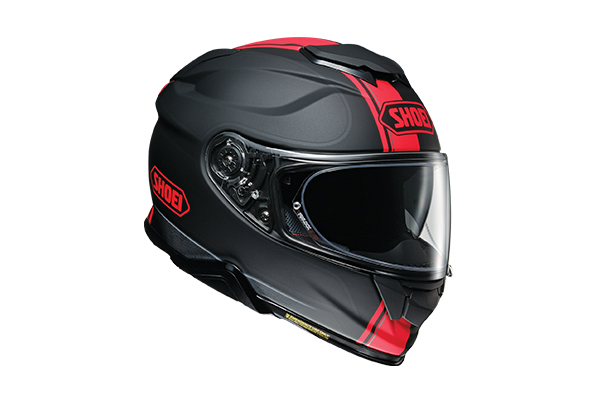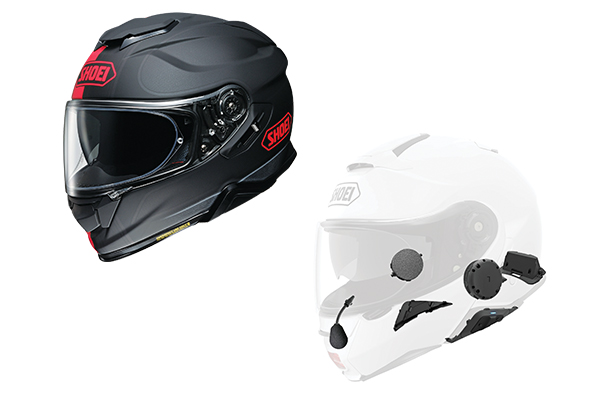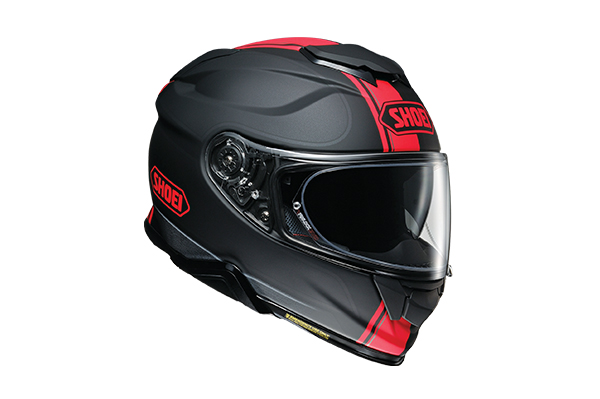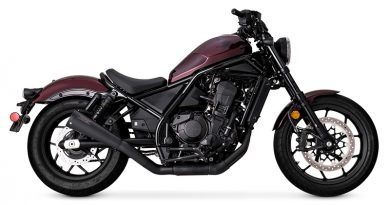Shoei GT-Air II Helmet | Gear Review

For sport-touring riders who prefer a traditional full-face helmet to a modular or flip-up style, Shoei’s GT-Air has been a top choice since it was first released back in 2012. Since then, the popularity of built-in or integrated Bluetooth communication systems has increased, so for 2019 Shoei has updated the GT-Air II with an optional Sena SRL2 comm system, along with some other tweaks meant to make a great lid even better.
The SRL2 ($299) was designed specifically for the GT-Air II, which means installation is quick and almost foolproof. Insert the battery and controller into their separate compartments, snap the speakers into the pre-cut indentations and stick the microphone on the inside of the chin bar (or use the included boom mic). Ready to ride!

Otherwise, the basic construction of the GT-Air II is unchanged: the shell is made of Shoei’s proprietary Multi-Ply Matrix AIM, which consists of hand-laid interwoven layers of fiberglass, organic fibers and resin, backed by a new EPS liner that now incorporates varying foam densities within each piece for a compact, lightweight design that still protects your noggin.
The removable, washable and sizable Max-Dry interior feels like it may be just a bit more plush than the previous GT-Air, but fit seems about the same as before: a slightly longer oval shape than some of Shoei’s other helmets. Fit around the neck roll is a tad looser to facilitate pulling the GT-Air II on/off but is still snug enough to keep things quiet.
One major change is the switch to the new, patented micro-ratchet chinstrap, as seen on the Neotec II. Unlike other ratcheting chinstraps, Shoei’s closure mechanism is made of 100-percent stainless steel — no plastic — for the utmost in safety. I like the design, which lets the user preset the general fit with an adjustable strap, and fine-tune it with the ratchet. It seems more secure and also more comfortable, similar to a traditional D-ring strap.
Other features include a new drop-down sun shield that’s 5mm longer than before; that doesn’t sound like a lot, but it’s enough to cover nearly the entire eyeport and is less intrusive when glancing down at the gauges. A redesigned upper vent shutter is still one of the easiest to use with gloves on, and has two intake positions, both of which flow noticeable amounts of fresh air; five exhaust vents, none of which can be closed, draw it out.
Shoei focused on making the GT-Air II as quiet as possible, with new, thicker face shield beading that seals tightly against wind and water and a compact, aerodynamic shell (my size small weighs in at 3 lbs., 9.8 oz. with SRL2 installed). With the vents closed, the GT-Air II is comfortably quiet, but once the vents are open the noise level goes up considerably. The CNS-1 face shield is the same as that used on the original GT-Air, and comes with a Pinlock EVO fog-resistant insert. The GT-Air II’s new baseplate, however, now allows the shield to be opened just slightly for venting and defogging.
Overall, the GT-Air II is a solid step up from the previous version, with enough updates and upgrades to justify the roughly $50 price increase. It’s available in sizes XS-2XL, spread over three shell sizes, for $599 (solids) or $699 (graphics).
For more information, see your dealer or visit shoei-helmets.com.
The post Shoei GT-Air II Helmet | Gear Review first appeared on Rider Magazine.




